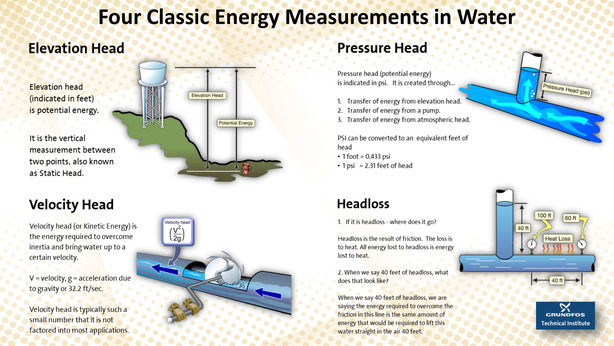What are the Four Classic Energy Measurements in Water (Head) ?
There are four classic water energy measurements, often called "Head", that you need to know. Grundfos sums them up here for you.

(Click image to enlarge)
Elevation Head (also known as Static Head)
Elevation head is indicated in feet is potential energy. It is the vertical measurement between two points.
Velocity Head (also known as Kinetic Energy)
Velocity head is the energy required to overcome inertia and bring water up to a certain velocity. V = velocity, g - acceleration due to gravity or 32.2 ft/sec. Velocity head is tpically such a small nmber that it is not factored into most applications.
Pressure Head
Pressure head (potential energy) is indicated in PSI. It is created through:
- Transfer of energy from elevation head
- Transfer of energy from a pump
- Transfer of energy from atmospheric head
PSI can be converted to an equivalent feet of head
- 1 foot = 0.433 psi
- 1 psi = 2.31 feed of head
Headloss
Headloss is the result of friction. The loss is to heat. All energy lost to headloss is energy lost to heat.
For instance, when we say 40 feet of headloss, we are saying that the energy required to overcome the fri tion in this line is the same amount of energy that would be required to lift this water straight in the air 40 feet.
